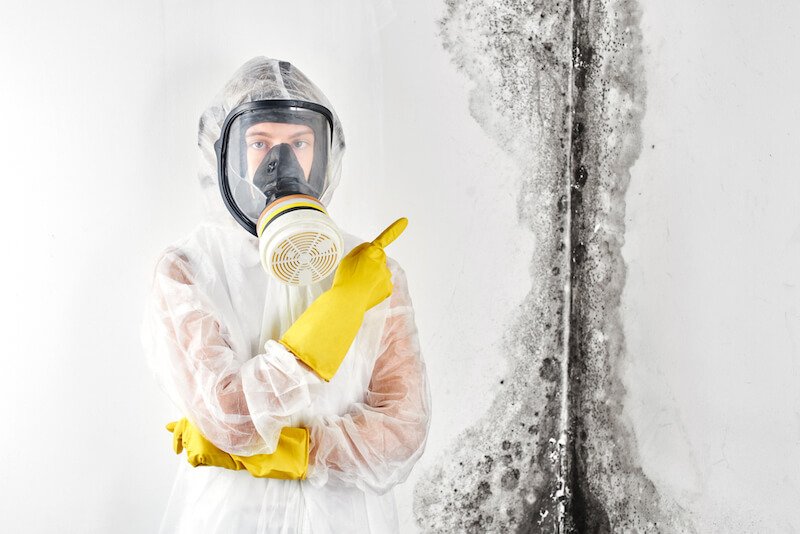Just ask anyone who has ever had to deal with mold in their house and they’ll tell you that what seems like a small problem can quickly become a very big deal. That’s especially true if you discover that what you actually have is black mold. While mold might start out as a microscopic concern, it can grow into a major issue faster than you expect. And if you’re trying to sell your house, you’ve just run into a major roadblock to getting the price you want.
Before you decide to put your house on the open market or sell it to a cash buyer as-is, you’re going to want to take some steps to determine whether or not it’s worth it to pay for the proper fixes and sell your house with mold.
How Can I Sell A House With Mold In Nebraska?
Identify The Mold
First, you need to understand and figure out where the mold came from and how deep the problem goes. It starts with you. When you’re in the house, does your nose get runny, your eyes get sore, and you sneeze a lot? You might have a mold allergy and it might be your body’s way of telling you that it’s close by. This is especially true if you instantly feel better when you leave your house.
The next step is to go to each room and check for a musty smell. Can you detect an odor that you associated with dampness? That could be a big warning sign that there’s mold lurking.
Now you want to try to see the mold if you can. In order to spot it visually, look for clusters of small black spots on walls. Don’t look in just the obvious places. Check crevices, corners, confined spaces, and other places where dampness, wetness, and cold temperatures may have affected the home.
If you find small clusters, you should immediately try to remove it. Use protective gear, use bleach or ammonia, and seal off each contaminated area to stop the spread. But you’re not out of the woods yet. Of course, there may be mold in areas you can’t see, such as inside the walls or under the floors. If you see water stains, discoloration, or warped wallpaper, that could be a warning sign that there’s mold lurking in your home’s dark corners.
Consider The Causes
You’ve discovered that you have mold and you’ve figured out how to contain the spread. The next step is to fix the issue that is allowing the toxic fungus to flourish inside your house.
First, check your pipes and water sources. A leaky pipe under the sink or in the bathroom is often a big culprit for causing mold to fester. Do you remember a previous time when your house flooded or had puddled water? Check those spots again because even though you cleaned it up you might have left behind just enough moisture for mold to take hold.
Look for condensation on your windows. If you constantly see build-up on windows and glass, consider a dehumidifier to help bring the moisture down. Otherwise, that could become a breeding ground for mold. Basically, if there’s a place inside or outside your home where moisture and water collect, you need to doublecheck it to see whether or not mold has taken hold here.
Make Time For A Mold Inspection
Mold is an overwhelming problem, literally and figuratively. So if you’re not an expert at identifying the sources or getting rid of it, consider hiring a mold inspector. If you find yourself being able to smell the mold but unable to see it, you’re really going to want to hire someone to help you find it. A mold inspection can reveal how infested the home has become. If mold has taken root in the walls, an inspector can find that out and identify problem areas.
There are mold home kits that you can use but their results can be misleading. You’re going to get better results by hiring a professional. Plus, if you’re going to put the home on the market, a mold inspection helps to protect you and the seller because it cuts down on the chance of surprises during the sales process.
How much will it cost? That depends on the size of the house and the extent of the infestation. Black mold removal in a basement can range from $500 to over $3,000. Getting rid of it in attics or ducts can cost between $2,000 and $6,000 for intense mold damage. If a house has been flooded and is covered in mold, you could be looking into the $10,000 and above range. At a certain point, you’ll have to decide if it’s even worth it to make the fixes yourself.
Be Honest With Buyers
The key to selling a house with mold problems, or even one that has had mold problems in the past, is to be upfront and honest with buyers. You don’t want someone to agree to buy your house and then have them discover via inspection that there is mold inside. Then they’ll either demand a lower price or cancel the sale altogether out of concerns that you weren’t being honest with them.
Some states require that you disclose mold in a home that is up for sale, but either way, it’s the correct thing to do. Especially if you consider that a buyer might have health concerns or allergies related to toxic mold. Also, if your buyer is using an FHA loan, they will be sending in appraisers who know what to look for. They’ll find it even if you don’t want them to.
Instead, be clear about where the mold infestation happened. Explain to buyers what you did when you found it, how it was cleaned up, and what changes were made to the house to make sure that mold growth won’t return there. You can’t promise that mold will never come back but at least you can come off as an honest individual by letting them know what happened and what to look for.
Consider Selling As-Is
The truth is, if mold has gotten into the bones of your home, the headaches may have only just begun. If you did manage to sell a house and the buyer discovers mold, they could bring a lawsuit against you. If you knew about the problem and didn’t solve it, that could put you in serious legal danger. Even if you are upfront, buyers are likely going to want to see the price come down to compensate for the state of the home and the needed repairs. It’s unlikely you’ll be able to get the high price you’re hoping for.
If you’re looking at a massive mold infestation and you just don’t want to make the financial investment to fix it, consider selling your home as-is to an investor like Element Homebuyers. They’ll give you a fair price and take the mold problem off your hands so you can move on and find a mold-free house to call home. Plus, you get cash in your pocket and peace of mind.

